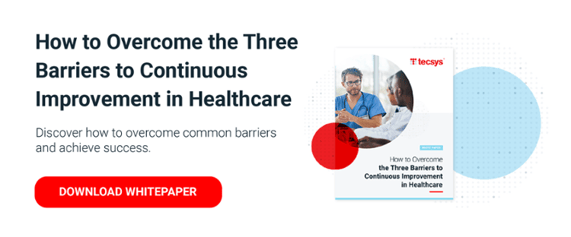The Journey to a Healthcare Consolidated Service Center

The dire shortage of critical medical supplies during the COVID-19 pandemic shined a massive spotlight on the need for healthcare providers to take control of their own supply chains rather than rely on third-party service providers or distributors. Supply chain professionals across the globe competing all at once to source products from suppliers, mostly based in China, is a recipe for disaster. Then you combine that with distributors rationing supplies and not giving hospitals the products to care for patients. It’s no wonder that panic ensued at many healthcare facilities.
On the flip side, health systems with the infrastructure of a consolidated service center (CSC) have the supply chain resiliency to rapidly respond to and recover from supply demand during all types of hazards, like COVID-19. This is because their supply chain is treated as a strategic asset of the health system. Staff at a CSC understands how to plan and source bulk buys internationally then move those products to various facilities throughout the organization.
Healthcare Consolidated Service Centers Are a Proven Supply Chain Practice
There are more than 60 health systems in the U.S. that have implemented a consolidated service center and all have proven financial and return on investment (ROI) results. First, a CSC helps eliminate waste, such as GPO admin fees, distributor fees, rebates, and courier costs. Second, CSC procurement staff can achieve significant price point improvements and bulk buy savings by using industry-proven demand planning algorithms and having direct contracts with the manufacturers. Third, a CSC enables a health system to reduce other supply chain costs by bringing ancillary services in-house, such as central sterile, printing, pharmacy central fill operations, etc. Lastly, a CSC has the potential to create additional revenue streams by servicing home health and distributing to other entities outside their system.
Top 3 Tips for a CSC Journey
There are many healthcare organizations determining if a consolidated service center is the right business model for their organization. Most likely the idea of a CSC was sitting on the leadership team’s back burner for quite some time…until recently. The good news is a CSC is a proven strategy for healthcare facilities of all size —not just the big health systems. And yes, implementing a consolidated service center is a complex decision that typically involves a long period of deliberation, but don’t let that scare you. Implementation can be easier than you think.
There are several things to do before you commit to this evolution of changing from individual hospital storerooms to a central warehouse servicing multiple hospitals, clinics and associated practices that may be spread out over your entire health system.I’m sharing a few pieces of advice to consider before you begin the journey.
1. Make sure you have organizational alignment
Know what you want to accomplish upfront and clarify your value proposition. It will be especially important to understand the financial benefits and burdens of this endeavor. A consolidated service center can result in huge long-term cost benefits, but the initial capital is oftentimes the first big hurdle that has to be cleared. The warehouse and equipment along with the bulk purchases and technology solutions that come with it, all have big price tags. Ultimately, the entire C-suite needs to be in complete agreement that a CSC will contribute to better patient care and result in cost savings for your organization, along with addressing the goal of taking control of your healthcare supply chain.
2. Thoroughly research the various operating models
As you are conducting the talent gap analysis and determining if you have the right skill sets in place to move to a consolidated service center, the question of outsourcing will come into play. There are a number of viable alternative operating models with options ranging from 100% outsourcing to 100% in-sourcing and many versions in between. The best thing you can do is talk to peer healthcare providers, ask questions and go on site visits to see how it all works.
3. Find a partner to help you with implementation
Once you have a general sense of where you’re headed with your consolidated services center, you will want to find a partner to help support you through the transition. There are going to be plenty of bumps in the road and having an experienced navigator is going to be indispensable as you transition to the new model. Even with the best laid plans and budget to support the initiative, you’re still going to need guidance on technology solutions, change management, training and executing a roll-out plan.



